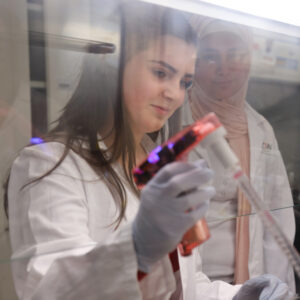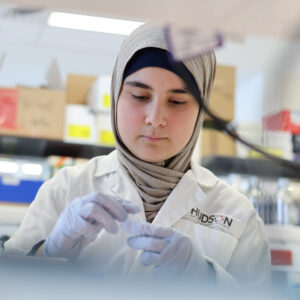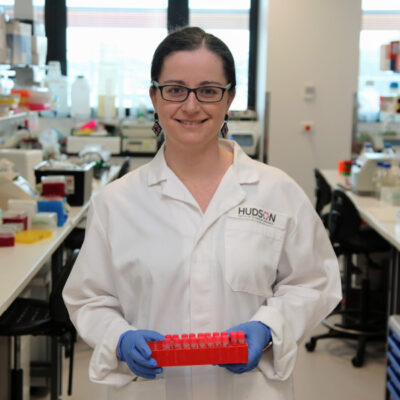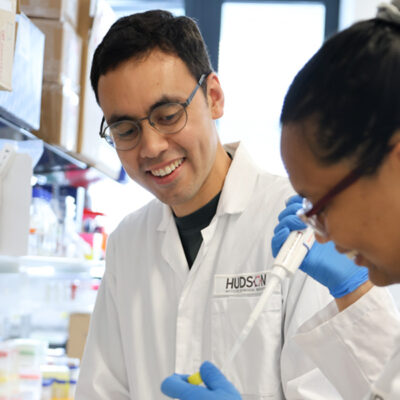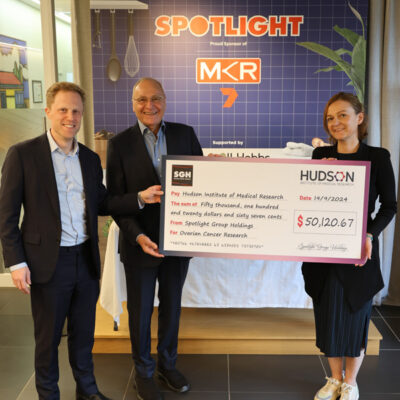Teen cancer survivors: a story of friendship and dreams
By Rob Clancy, staff writer
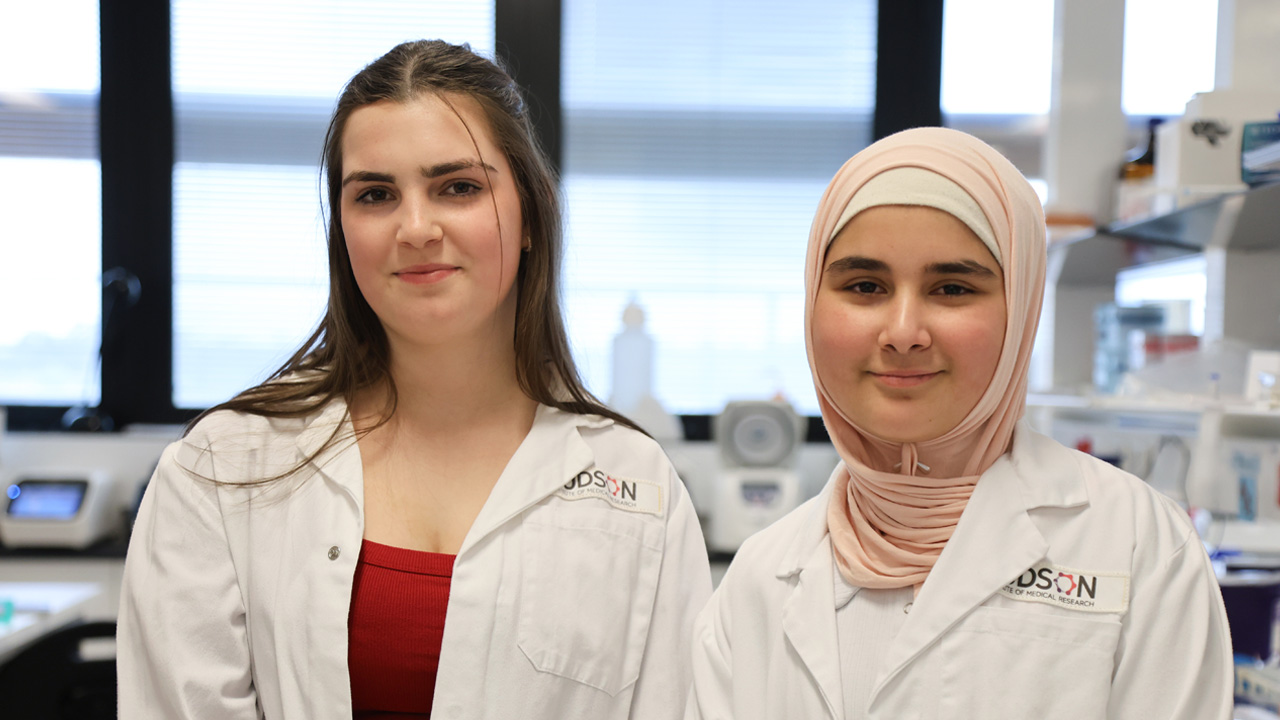
A girl’s teenage years can be a challenging time, with lots of changes to deal with as she works out where she fits in the world, but all of that seems almost insignificant when cancer is thrown into the mix.
Imagine dealing with cancer during the depths of COVID-19 lockdowns, then emerging not just healthy, but with a determination to pursue a career in healthcare.
That’s the story shared by two remarkable Melbourne teenagers, Tianna and Raya. They fought and beat leukaemia, and are now aiming to help others who find themselves facing the same medical nightmare.
Friendship forged in cancer treatment
They met and forged a friendship in mid-2021 while undergoing bone marrow transplants and have come together again this year, spending a week of work experience in Dr Catherine Carmichael’s laboratory at Hudson Institute of Medical Research.
Dr Carmichael is a molecular cancer biologist who leads the Leukaemia Modelling and Therapeutic Discovery Research Group at Hudson Institute, so she’s just the person to introduce these teen cancer survivors to the scientific side of leukaemia.
“Leukaemia is the most common cancer diagnosed in children and the second leading cause of cancer-related death in children. Each year nearly 300 Australian children are diagnosed with leukaemia.” Dr Catherine Carmichael
Cancer treatment for developing bodies
“Rather than being developed with children in mind, childhood leukaemia treatments have been largely adapted from the adult setting. We know that children are not just small adults, so we need to design and develop therapies specifically tailored to children, to increase efficacy and reduce toxicity and long-term side effects.”
Dr Carmichael’s research program is developing new laboratory models of leukaemia that more faithfully reflect the childhood disease. Her team is working toward identifying, developing and testing new treatment approaches specifically for childhood leukaemia.
“The hope is to develop new ways to treat children with leukaemia that are more effective, less toxic and longer lasting,” she said, as she prepared to welcome the two teens to her laboratory.
Tianna wants to become a paediatric doctor, saying: “I’ve been there, so I truly understand how these kids feel and what they’re going through; I’d love to make this experience better and give people hope.”
Raya’s ambitions are similar but different – she plans to become a pharmacist: “This whole experience has shaped that; I learned there are lots of nice people in hospitals and I can see myself being part of it.”
Teenage cancer recovery: making a difference for others
It’s not just these teen cancer patients who have been inspired by their experiences in the health system – their families are now active in helping others, as part of the Victorian Paediatric Cancer Consortium’s Parental Advisory Committee, a co-led initiative of Hudson Institute.
Though their cancers were different – Raya had B-cell Acute Lymphoblastic Leukaemia (BALL) and Tianna had Acute Myeloid Leukaemia (AML) – they are now both in remission and also aware of the long-term effects of the treatments they endured.
It’s extra motivation to do what they can to improve the science around blood cancers.
Tianna and Raya’s cancer journeys
Tianna
- 12-year-old Tianna was unwell at Christmas 2020. She got her leukaemia diagnosis a few days later. Her first transfusion was on New Year’s Eve, and she had a lumbar puncture every six weeks to administer chemotherapy.
- She spent almost five months in a pod (six weeks inside, then two weeks at home for each cycle) as her immune system was “wiped” before a bone marrow transplant.
- Developed a mystery infection in Intensive Care (ICU), where she was on life support for 72 hours.
- Still dealing with side-effects of the treatment, including potential fertility issues.
Raya
- At 11 Raya developed a tic, then spasms then facial tics, all on the right side of her body, then memory loss. Eventually they were told her body was producing excessive amounts of eosinophils – a rare side-effect of leukaemia – which disrupted brain functions.
- The first round of chemotherapy made a moderate change to her cancer counts, but the second round, which was more intense, made very little change. Each round took a month.
- Wanting to avoid a bone marrow transplant, due to the effects of radiation exposure, her father suggested CAR-T treatment as bridging therapy, which helped, but in the end, a transplant was needed.
- Developed graft-versus-host disease after transplant, meaning an extra month in hospital.
- Still dealing with side-effects of the treatment, including issues with peripheral nerves.
In this issue of Hudson News Summer 2024
In this article
About Hudson Institute
Hudson Institute’ s research programs deliver in three areas of medical need – inflammation, cancer, women’s and newborn health. More
Hudson News
Get the inside view on discoveries and patient stories
“Thank you Hudson Institute researchers. Your work brings such hope to all women with ovarian cancer knowing that potentially women in the future won't have to go through what we have!”


